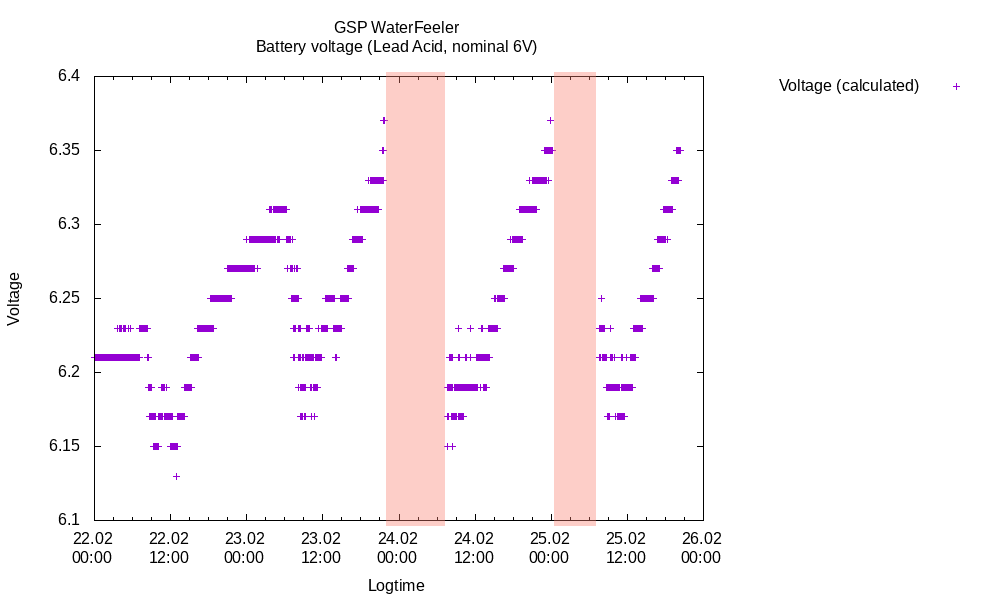It seems we have two somewhat related problems with WaterFeeler. First of, our solar panel is too small, and second, the voltage readings from our voltage divider seem wrong.
Not enough solar power
Waterfeelers solar panels do not generate enough power to recharge the battery for a full day, let alone add some spare charge to make sure we top off the battery as much as possible. For the last couple of days (both by the way rather sunny), we ran out of power during the night. This isn't a measuring error, visual inspection of the probe confirmed it was off.

Voltage reading errors
A somewhat related problem that's making the first one a bit harder to diagnose: According to our readings, voltage goes down while recharging, but goes up during evening and night before running out of power.
This seems to be a design error on my part. Most likely, this is a problem related to the internal voltage dropping below 5 Volt, which in turn throwing off the measurements on the analog pins of the Arduino.
I'll have to investigate if i can fix that in software somehow.
What happens next?
The plan currently is to rebuild WaterFeeler as "WaterFeeler 2" (internal project name, may change) with a bigger solar panel. I will also update the software, including the fix for the "Forced Relais" mode. Since i now have more information on the soil resistance, i will be able to free some digital pins, currently used for soil resistance pulldowns, for one or more additional sensors. Among our engineers there is even talk about including an early Raspberry Pi based camera system as an on-demand instrument, but this is purely speculation at this point. The current WaterFeeler will end its mission today afternoon. The new one should be able to launch in a few days, probably on the weekend.
The old solar panel (two chinese 6V cells in series) will also get reused. While i previously stated that i'm pretty much done with the "GEO" satellite series, i changed my mind again. There is at least one prime spot for using a GEO class sat for testing the new antenna system. It's on the other end of my garden, through the forest, and it gets a few hours of direct sunlight in the morning. Of course, this new "GEO 3" (internal project name, may change) will be constructed using the new methods of plastic and hot glue, as well as the new RF24 hardware. Its main job will be to provide more information on solar-only operation, performance of the new RF24 hardware in low power mode and provide emergency communication in the forest area.
|


